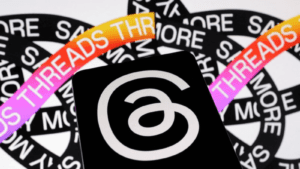As a marketer, you’re probably always looking for new ways to reach your target audience. And with the ever-changing landscape of marketing, it can be hard to keep up. One of the latest buzzwords in the marketing world is “influencer marketing.” But what is it? And how does it compare to traditional marketing? Let’s take a look.
What is influencer marketing vs. traditional marketing?
Influencer marketing and traditional marketing are two forms of advertisement. Influencer marketing focuses on involving social media personalities that have influence in a certain market, who create a message for the product through their platform. This increase in the appeal is derived from the already established social media presence of the influencers, creating an emotional connection with the potential customers. On the other hand, traditional marketing relies on mediums such as TV commercials, radio ads, magazine print advertisements or billboard signs. It takes more time to establish an emotional bond between the customer and the product using traditional marketing techniques because it’s often just a one-way conversation or single direction transmission.
The pros and cons of each type of marketing
Marketing is an invaluable tool for corporations and organizations: it allows clients to reach broader audiences, promote products and services, and develop a distinctive voice in their respective industries. With numerous avenues to choose from when it comes to marketing—digital, print, outdoor, etc.–it can be difficult to determine which will provide the best results. Each type of marketing specializes in different areas so advantages and drawbacks are depending on one’s preference and budget. Digital marketing is particularly attractive due to its low cost of entry but requires deep consumer insights as well as an understanding of analytics; whereas print media can be relatively expensive but targets a larger portion of the population. Outdoor advertising often provides maximum visibility but not necessarily consumer engagement; whilst video marketing effectively combines visual elements as well as sound for greater engagement potential. Ultimately, choosing the right type of marketing depends heavily on a business’s needs and goals. Therefore, conducting research beforehand to weigh each option’s pros and cons will bring about greater success for any company or organization.
A few examples of Successful Influencer Marketing campaigns
Influencer marketing is a powerful tool for businesses to promote products and services. It involves partnering with social media influencers who have a large and engaged audience, in order to spread the message of a brand to an already existing fan base. There are many successful examples of influencer marketing campaigns that have created a positive ROI for companies. Take, for example, the L’Oréal brand, whose ‘#powerofeiffel’ campaign partnered with beauty YouTube stars to create content about their Voluminous mascara product. This campaign aided in generating over 35K uses of the hashtag and over 8 million views on YouTube. Another instance of successful influencer marketing is Hyundai’s campaign with Instagrammers who traveled around America for 40 days with one of their luxury SUVs. The influencers shared their stories on social media and by utilizing several hashtags their posts reached 42 million potential customers worldwide. These are just two samples of how these campaigns can be executed but they clearly demonstrate how influential they can be in effectively driving sales and awareness.
How to create a successful influencer marketing campaign?
When it comes to successful influencer marketing campaigns, preparation and research are key. It is important to review the audience you are targeting, as well as their interests and followed influencers. Once you have identified target influencers for your campaign, reach out to them with a well-crafted pitch. Make sure to outline the goals of your campaign, along with the details of how you intend on compensating each influencer for their involvement. Additionally, create a style guide so that all participating influencers maintain consistency throughout their content pieces- this can make it easier for your audience to identify and recall the messages associated with your campaign. Last but not least, establish clear performance metrics before launching your campaign in order to measure its effectiveness. By following these steps before executing a campaign, you’ll be much more likely to reach your desired objectives.
What to avoid when using influencer marketing!
When it comes to influencer marketing, many businesses want to know what pitfalls they should be avoiding so they can get the most out of their investment. First, it’s important to make sure you’re working with an influencer who is a good fit for your brand and foreseeable audience. Partnering with an influencer whose interests or values contradict those of your brand can have detrimental effects on the success of the campaign. Additionally, it’s beneficial to ensure that everyone involved in the project is familiar with FTC regulations on endorsements, as any misalignment here can also lead to unexpected issues. Lastly, don’t forget to evaluate performance and optimize campaigns in real time – adapting quickly as needed and taking advantage of analytics as much as possible will help ensure you are getting a good return on investment.
In conclusion, influencer marketing and traditional marketing each have different advantages and drawbacks. Companies are often successfully combining both approaches to generate higher engagement. When creating an influencer campaign, it’s important to research influencers to ensure they’re the best fit for your brand and carefully consider their terms of the agreement. It’s also important to craft a compelling message and choose the right emphasis when providing rewards. While influencer marketing can be a great way to drive engagement, it comes with some risks as well; businesses should take caution not to spam their followers with overly promotional posts or neglect existing connections. With the right strategy in place, though, businesses have found success using both forms of marketing combined or separately.





